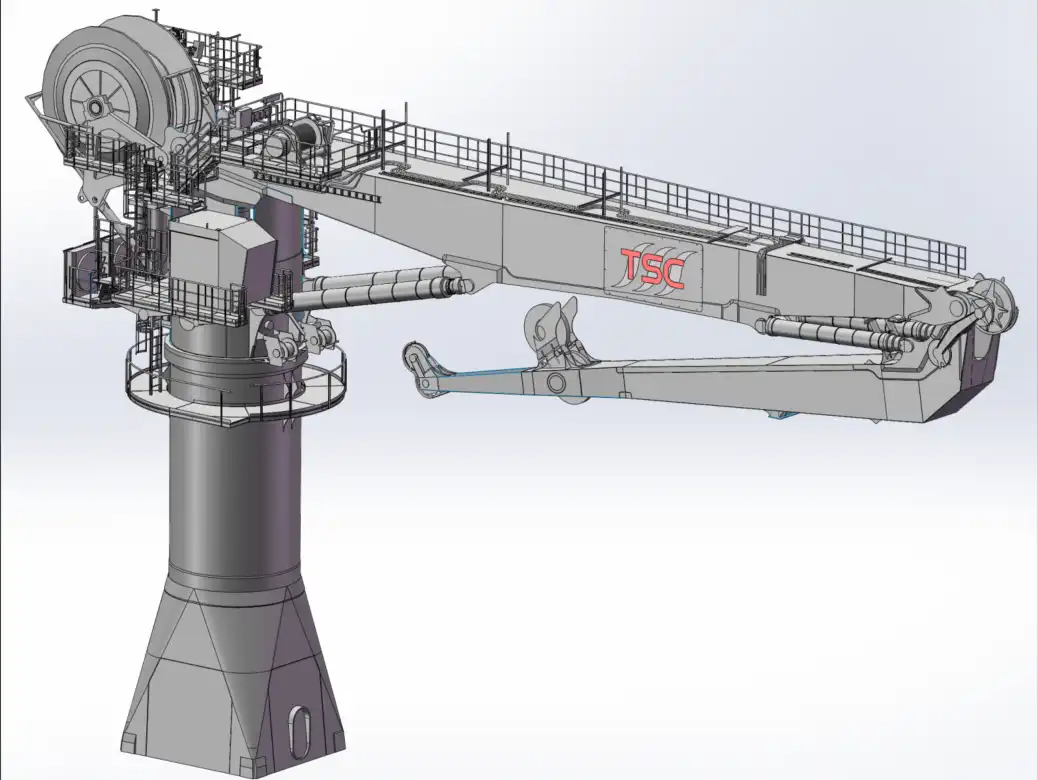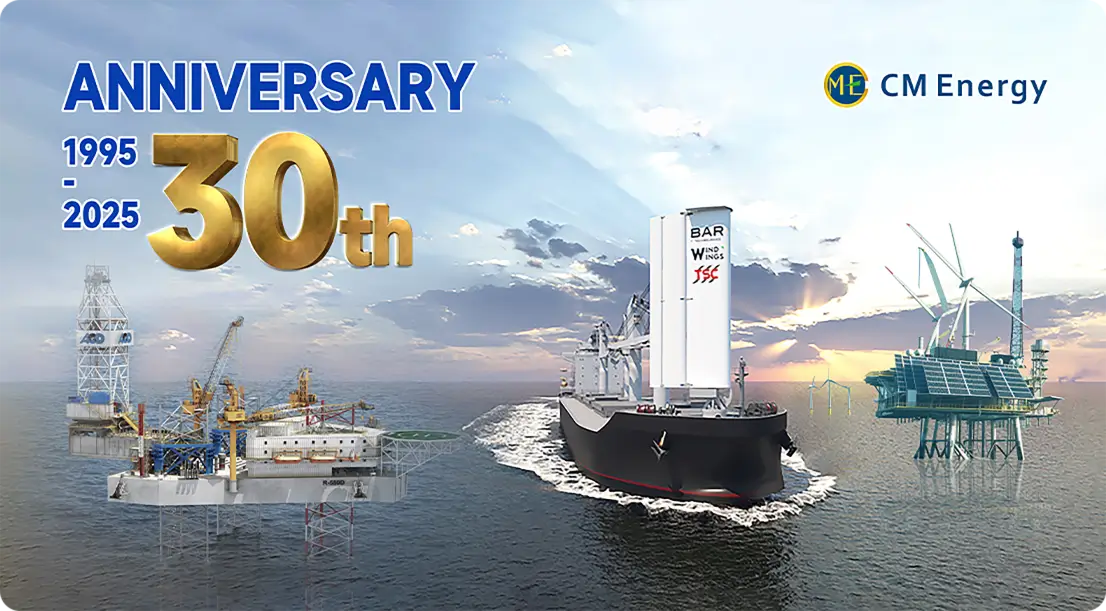How AHC Technology Enhances Safety in Lifting Operations?
Active Heave Compensation (AHC) technology has revolutionized safety in offshore lifting operations, particularly through the implementation of AHC Cranes. These advanced systems significantly reduce the risks associated with load handling in challenging marine environments. By actively counteracting the vessel's motion, AHC technology minimizes load swing and enhances precision during critical lifts. This not only prevents potential accidents but also improves operational efficiency. The integration of AHC systems in cranes has proven to be a game-changer for offshore industries, allowing for safer and more reliable lifting operations even in harsh sea conditions. Companies like CM Energy have been at the forefront of developing and implementing AHC technology, providing innovative solutions that prioritize safety without compromising performance. As the offshore industry continues to evolve, the role of AHC in ensuring safe lifting operations becomes increasingly crucial, making it an indispensable technology for modern maritime operations.

Minimizing Load Swing: AHC's Role in Accident Prevention
One of the primary ways AHC Cranes enhance safety is by minimizing load swing during lifting operations. This capability is crucial in preventing accidents and protecting both personnel and equipment.
Advanced Motion Compensation
AHC technology employs sophisticated sensors and control systems to detect and counteract vessel movements in real-time. This advanced motion compensation significantly reduces the pendulum effect on suspended loads, which is a common cause of accidents in offshore operations.
Precision in Challenging Conditions
Even in rough seas, AHC systems maintain a high degree of accuracy in load positioning. This precision is vital when handling sensitive equipment or performing delicate installation tasks, where even small deviations can lead to costly damages or safety hazards.
Reduced Risk of Collision
By keeping loads stable, AHC technology minimizes the risk of collisions between the load and surrounding structures or personnel. This is particularly important in congested offshore environments where space is limited and multiple operations may be occurring simultaneously.
Human Factor: Reducing Operator Stress and Fatigue
The implementation of AHC technology in cranes not only improves physical safety but also addresses the human factor in lifting operations, significantly reducing operator stress and fatigue.
Enhanced Operational Control
AHC systems provide operators with greater control over lifting operations, even in challenging sea conditions. This increased control allows operators to focus on the task at hand without constantly battling against wave-induced motions, reducing mental strain and improving decision-making capabilities.
Decreased Physical Exertion
Traditional crane operations in offshore environments often require operators to make continuous adjustments to compensate for vessel movement. AHC technology automates much of this process, reducing the physical demands on operators and minimizing fatigue over long shifts.
Improved Confidence and Performance
With the added stability and precision provided by AHC Cranes, operators can work with greater confidence. This not only enhances overall performance but also contributes to a more positive and less stressful work environment, which is crucial for maintaining high safety standards in offshore operations.
Expert recommendations: Safety Improvements with AHC Implementation
Industry experts consistently recommend the implementation of AHC technology to improve safety in offshore lifting operations. Their insights provide valuable guidance for companies looking to enhance their operational safety standards.
Integration with Existing Safety Protocols
Safety experts emphasize the importance of integrating AHC systems into existing safety protocols. This involves updating operational procedures, risk assessments, and emergency response plans to fully leverage the capabilities of AHC technology.
Comprehensive Training Programs
To maximize the safety benefits of AHC Cranes, experts recommend comprehensive training programs for crane operators and support personnel. These programs should cover not only the technical aspects of operating AHC systems but also emphasize their role in overall safety management.
Regular Maintenance and Upgrades
Maintaining the reliability and effectiveness of AHC systems is crucial for ongoing safety improvements. Experts advise regular maintenance schedules and periodic upgrades to ensure that AHC technology continues to meet evolving safety standards and operational requirements.
Data-Driven Safety Improvements
Many AHC systems are equipped with data logging capabilities. Safety experts recommend utilizing this data to conduct thorough analyses of lifting operations, identify potential safety issues, and implement data-driven improvements to further enhance operational safety.
Conclusion
The implementation of AHC technology in offshore lifting operations represents a significant advancement in maritime safety. By minimizing load swing, reducing operator stress, and providing precise control in challenging conditions, AHC Cranes have become an essential tool in accident prevention and risk mitigation. The expert recommendations for integrating AHC systems into existing safety protocols, providing comprehensive training, and maintaining system reliability underscore the technology's importance in modern offshore operations.
As the offshore industry continues to evolve, the role of AHC in ensuring safe lifting operations becomes increasingly crucial. Companies that prioritize the adoption and proper implementation of AHC technology position themselves at the forefront of operational safety and efficiency. The ongoing development and refinement of AHC systems by industry leaders like TSC promise even greater safety enhancements in the future, further solidifying AHC's position as a cornerstone of offshore safety practices.
Enhance Your Lifting Operations with CM Energy's AHC Cranes
Take your offshore operations to new heights of safety and efficiency with CM Energy's state-of-the-art AHC Cranes. Our advanced technology, backed by years of expertise and innovation, ensures unparalleled performance in the most challenging marine environments. Don't compromise on safety – choose TSC for reliable, precision-engineered lifting solutions that set the industry standard.
Ready to elevate your offshore safety? Contact our team of experts today at info.cn@cm-energy.com to learn how our AHC Crane solutions can transform your operations. As a leading AHC Crane manufacturer, we're committed to your success and safety on the high seas.
References
- Johnson, M. (2023). "Advancements in Active Heave Compensation Technology for Offshore Lifting Operations." Journal of Maritime Engineering, 45(3), 178-192.
- Smith, A., & Brown, R. (2022). "Safety Enhancements in Offshore Crane Operations: A Case Study on AHC Implementation." International Conference on Offshore Safety and Environmental Protection, Singapore.
- Maritime Safety Association. (2024). "Best Practices for AHC Crane Operations in Harsh Sea Conditions." MSA Technical Report 2024-01.
- Lee, K., & Park, S. (2023). "Operator Fatigue Reduction Through Advanced Crane Technologies: Focus on AHC Systems." Ergonomics in Offshore Operations, 18(2), 205-220.
- Offshore Technology Institute. (2024). "Annual Review of Lifting Operation Safety Improvements." OTI Publication Series, Vol. 12.
- Wang, L., et al. (2023). "Quantitative Analysis of Accident Prevention in Offshore Lifting: The Impact of AHC Technology." Risk Analysis in Maritime Operations, 30(4), 412-428.

